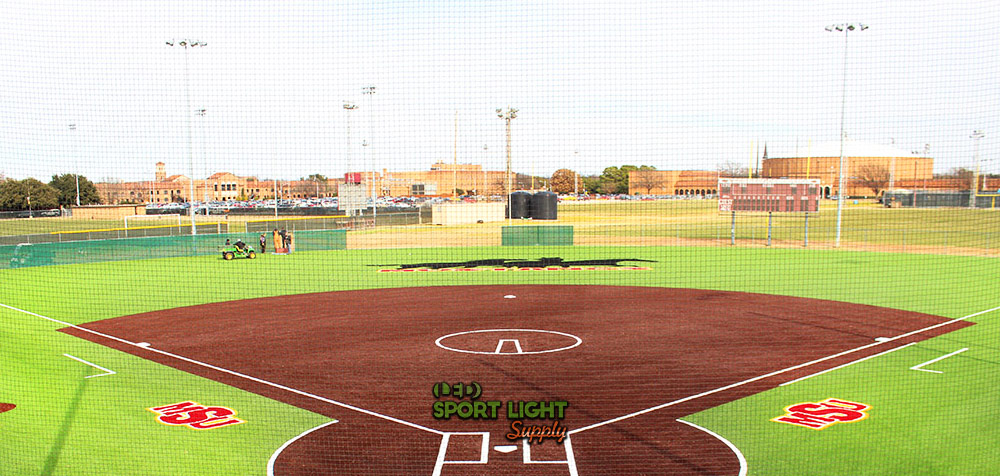A softball light pole is a pivotal structure in the design of a softball field, engineered to support and elevate light fixtures that provide essential illumination. These poles are built to be tall and sturdy, typically constructed from robust materials such as metal—commonly aluminum or steel—or high-strength composite materials. The durability of these materials ensures that the poles can withstand environmental factors like wind and rain, and maintain their integrity over time. To ensure stability, the poles are securely anchored into the ground, which is critical for both the safety of players and the effective operation of the lighting system.
Effective lighting is crucial for softball games, particularly those played in the evening or at night. It enables players to clearly see the ball and field, facilitating accurate play and reducing the risk of accidents. For spectators, well-distributed lighting enhances the viewing experience by improving visibility and allowing fans to follow the game with ease. In summary, the softball light pole is integral to creating a safe and enjoyable environment, ensuring that both the players and the audience have the best possible experience during games held under artificial light.
Table of Contents
ToggleStandard Height of a Softball Light Pole
Minimum Height Requirements for Softball Lighting

The minimum height for softball light poles varies based on the level of play and specific lighting standards. For collegiate games governed by the National Collegiate Athletic Association (NCAA), the recommended height is at least 50 feet. This height ensures an average horizontal illumination of 500 lux on the field. Similarly, the Amateur Softball Association (ASA) suggests that light poles should also be at least 50 feet tall, but with a slightly lower illumination standard of 300 lux.
Common Softball Field Pole Height
Typically, the standard height for light poles on softball fields adheres to the guidelines set by governing bodies like the NCAA and ASA. However, these standards can vary slightly based on the level of play and the specific needs of the field.
Factors Affecting the Height of a Softball Light Pole
Level of Play
The height of the light pole often depends on the level of play. Higher levels of competition generally require taller poles to provide enhanced visibility and lighting. This ensures that the players have optimal lighting conditions for both safety and performance.
Field Dimensions
Field size and layout significantly influence the required pole height. Larger fields typically need taller poles to achieve uniform lighting coverage. Conversely, smaller fields may manage with shorter poles, as they require less height to adequately illuminate the playing area.
Available Space
The space surrounding the field plays a crucial role in determining pole height. In areas with limited space, shorter poles might be necessary to prevent obstructing views or interfering with nearby structures.
Illumination Requirements
The level of illumination needed for the field impacts pole height. Fields requiring higher illumination levels may need taller poles to achieve the necessary light distribution. Proper lighting is essential to ensure that the playing surface is evenly lit and safe for players.
Budget
Budget constraints can also affect the choice of pole height. Taller poles are generally more expensive to install and maintain. If budget limitations are a concern, opting for shorter poles might be a more cost-effective solution, though it could impact the quality of lighting.
Variations in Softball Light Pole Height
Customized Heights for Specific Fields or Facilities
In some cases, the height of softball light poles may be customized to address the specific needs of a particular field or facility. Customization ensures that the lighting setup provides the required illumination while accommodating unique factors such as field dimensions, available space, or budget constraints.
For instance, a smaller softball field or one with limited surrounding space might necessitate shorter light poles. This prevents obstruction of views and interference with nearby structures. Conversely, a larger field with ample open space can accommodate taller light poles, enhancing coverage and illumination across the playing area.
Customization also proves beneficial for facilities with multiple fields or courts, where consistent lighting across all areas is crucial. In such cases, light poles may be adjusted to meet the unique needs of each field or court, ensuring that overall illumination requirements are satisfied.
Adjustable or Movable Light Poles
Some softball light poles feature adjustable or movable designs, offering flexibility to modify their height as needed. This adaptability is particularly useful for facilities hosting various events or activities with differing lighting requirements.
For example, an adjustable light pole can accommodate both softball and baseball games, which have different lighting needs. By adjusting the pole height, the facility can ensure optimal illumination for each sport.
Movable light poles add further versatility by allowing temporary relocation of lighting. This is advantageous for events or activities that require a different field layout or configuration. Ensuring that lighting is set up effectively for each specific event or activity helps optimize both visibility and overall field performance.
Conclusion
Light poles support the light fixtures that illuminate the field, allowing players to see the ball and the playing surface clearly. Without properly functioning light poles, the field’s illumination would be insufficient, potentially compromising player safety and diminishing the viewing experience for spectators.
Moreover, light poles are crucial for achieving uniform lighting across the field. Consistent illumination is vital for fair play and player safety, as uneven or patchy lighting can create shadows or areas with reduced visibility. By ensuring that light poles are correctly spaced and positioned, these issues can be minimized, providing players with a clear view of the ball and field.
Beyond their functional importance, light poles contribute to the overall aesthetic of a softball field or facility. Well-designed and strategically placed poles enhance the visual appeal of the field, creating a more inviting and enjoyable atmosphere for both players and spectators. Thus, the right choice in light pole height and placement not only supports gameplay but also adds to the field’s attractiveness and functionality.
